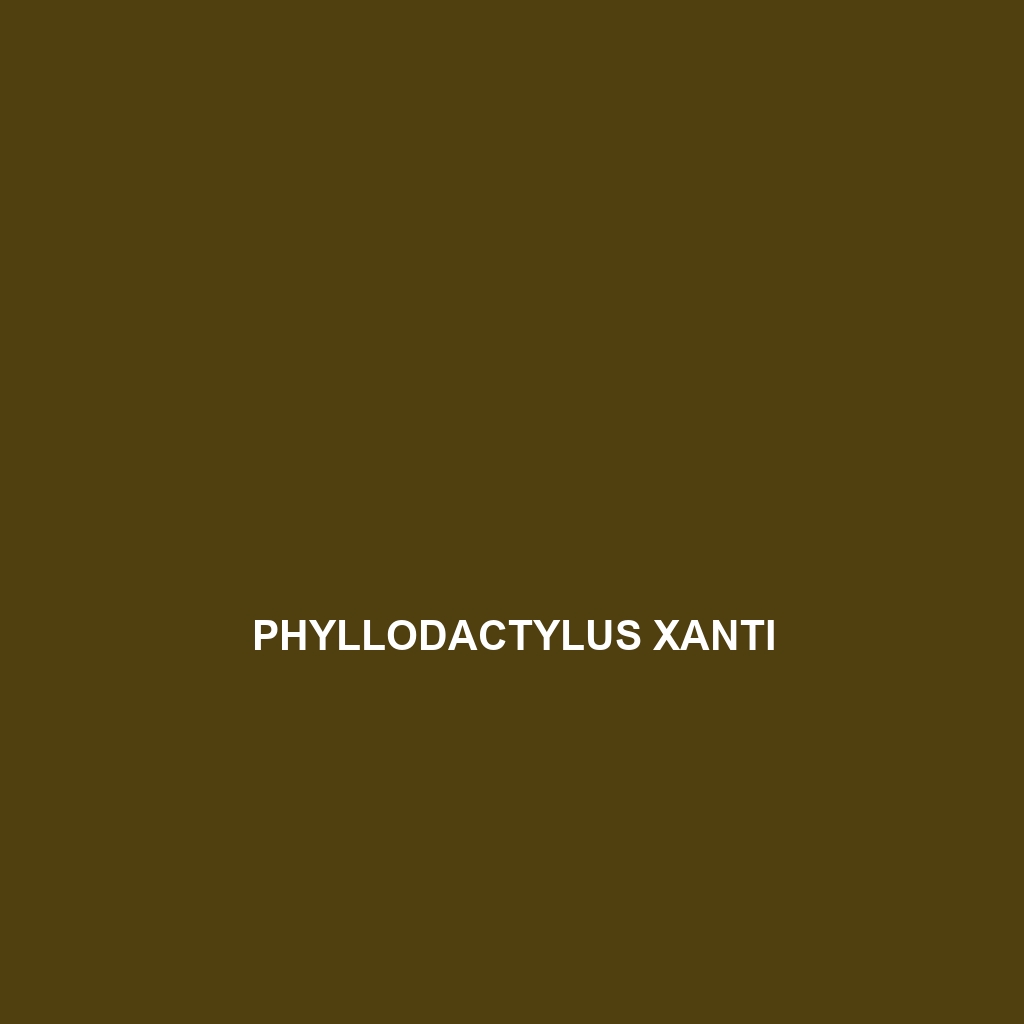Common Name
Phyllodactylus xanti
Scientific Name
Phyllodactylus xanti
Habitat
The Phyllodactylus xanti, commonly known as the Xantus’s leaf-toed gecko, is primarily found in the deserts and dry scrublands of the Baja California Peninsula, particularly in Mexico. This species thrives in arid environments where temperatures can soar during the day. Its habitat stretches from the coastal regions to the interior, where rocky outcrops provide essential crevices for shelter. Phyllodactylus xanti is often located in regions that experience minimal annual rainfall but are characterized by a mixture of savannas and semi-desert ecosystems. These habitats favor the survival of plants and insects, which in turn support the local gecko population.
Physical Characteristics
Phyllodactylus xanti typically measures between 3 to 5 inches in length, making it a relatively small gecko species. It is distinguished by its flattened body structure and spatula-like toe pads, which enable it to maneuver effortlessly across rocky surfaces. The coloration ranges from light brown to gray, with darker mottled patterns that provide excellent camouflage against the terrain. Its large, bulging eyes are well-adapted for nocturnal activities, allowing it to see well in low-light conditions. Unique to this species are the lamellae on the toes that enhance its gripping ability on various substrates, making it an agile climber and an adept hunter.
Behavior
Phyllodactylus xanti exhibits nocturnal behavior, primarily becoming active during the cool nights to hunt for food and avoid the daytime heat. During the mating season, which typically occurs in the spring, males can be observed performing elaborate courtship displays, including head bobbing and vocalizations to attract females. Social interactions are primarily territorial, with males often engaging in aggressive displays to ward off rivals. During the day, these geckos seek shelter in crevices and under rocks, where they can remain hidden from predators.
Diet
The diet of Phyllodactylus xanti is primarily insectivorous, feeding on a variety of insects such as crickets, beetles, and cockroaches. In addition to insects, they may also consume small invertebrates, making them important pest controllers in their ecosystems. These geckos utilize their keen night vision and agile movements to catch their prey, demonstrating effective hunting techniques. While primarily classified as insectivores, they will occasionally consume other small food items, showcasing a degree of opportunistic feeding behavior.
Reproduction
The reproductive cycle of Phyllodactylus xanti typically begins with courtship rituals in early spring when males actively search for females. After successful mating, females lay their eggs in sheltered locations to protect them from predators. The gestation period extends for several weeks, resulting in the hatching of 1 to 2 eggs. The hatchlings are independent from birth and do not require parental care, which is common among many gecko species. This reproductive strategy allows for quick population recovery in suitable habitats.
Conservation Status
Currently, Phyllodactylus xanti is classified as Least Concern according to the International Union for Conservation of Nature (IUCN). However, the species faces potential threats from habitat loss due to urbanization and climate change. Conservation efforts focus on maintaining its natural habitats and mitigating human impacts. Awareness and education regarding the ecological significance of this gecko can help promote conservation initiatives aimed at protecting its environment.
Interesting Facts
Phyllodactylus xanti has some fascinating survival adaptations. For instance, during periods of extreme heat, they can exhibit stasis behavior, where their metabolic rate decreases significantly, allowing them to survive on minimal resources. Interestingly, when threatened, this gecko is known to drop its tail as a defense mechanism, which can later regenerate. This ability not only provides an escape from predators but also highlights the resilience of this unique species in its harsh habitat.
Role in Ecosystem
Phyllodactylus xanti plays a vital role in the ecosystem as both a predator and prey. As insectivores, they help regulate insect populations, contributing to the ecological balance of their environment. Simultaneously, they serve as an important food source for larger predators, including birds of prey and snakes. This dynamic highlights the interconnectedness of species within the desert ecosystem, showcasing how Phyllodactylus xanti contributes to the health and sustainability of its habitat.
